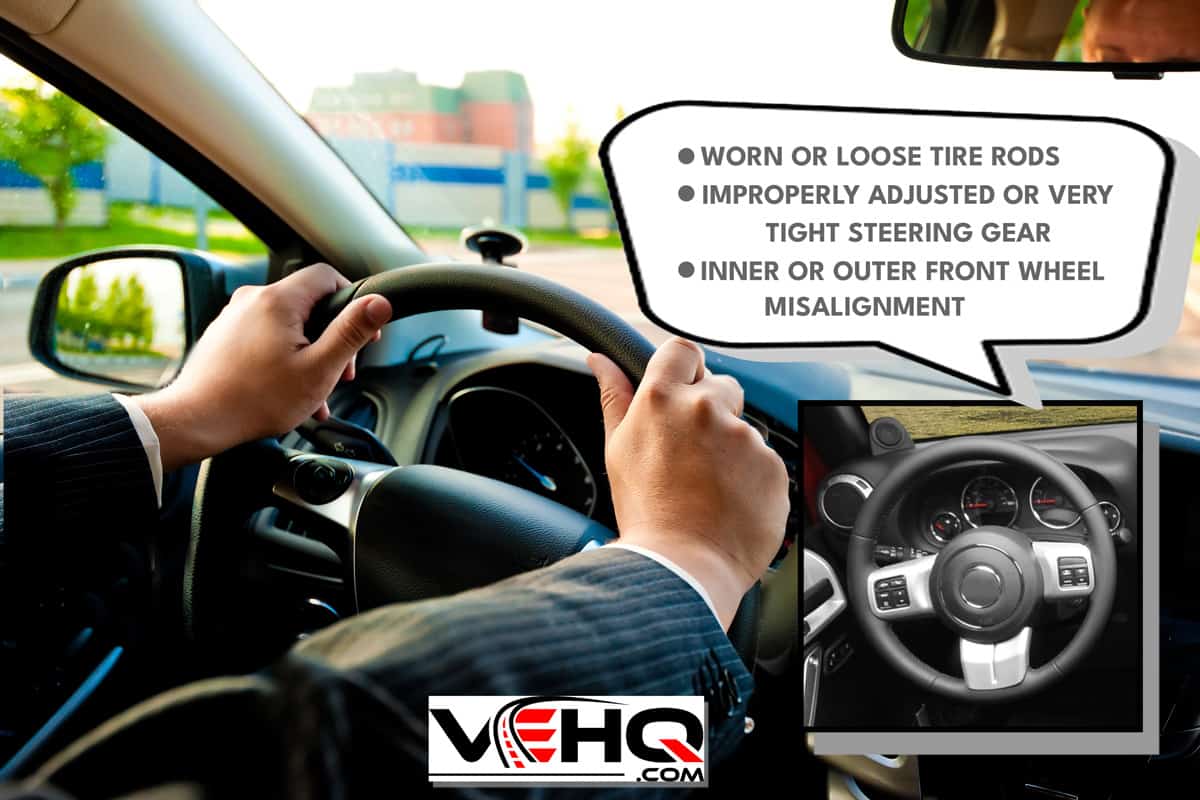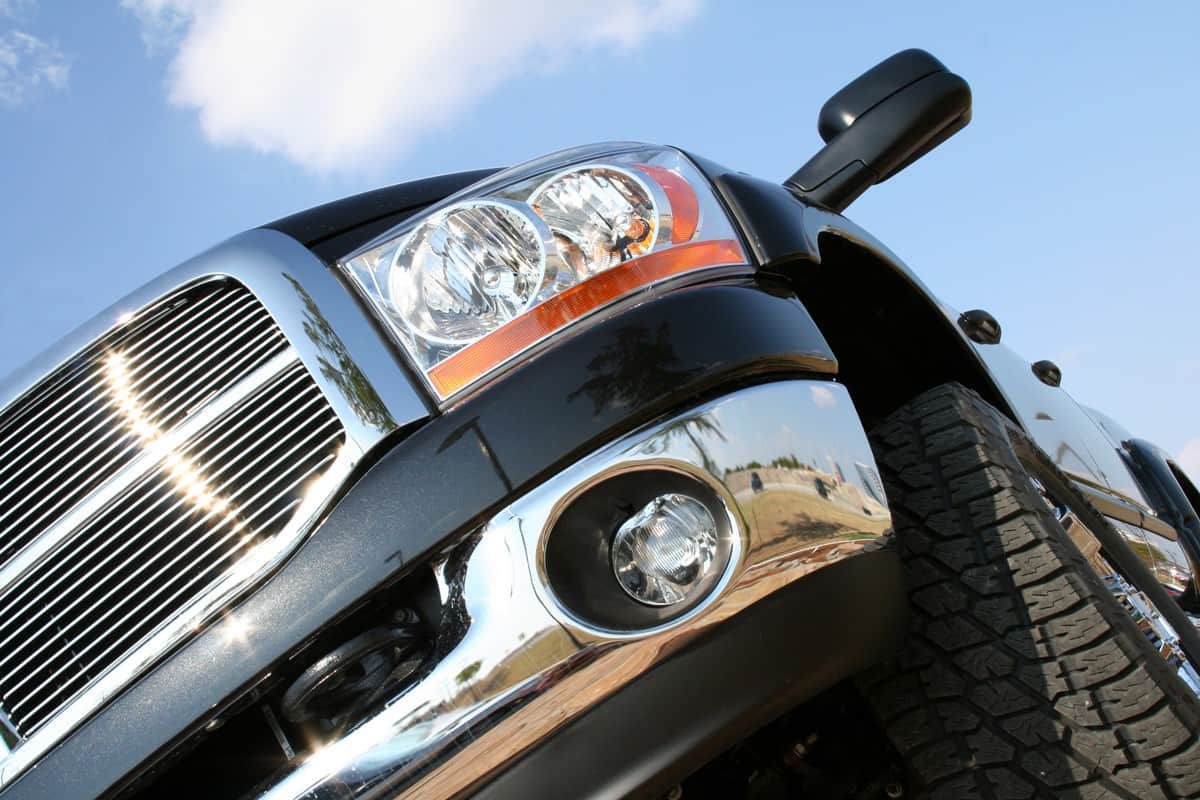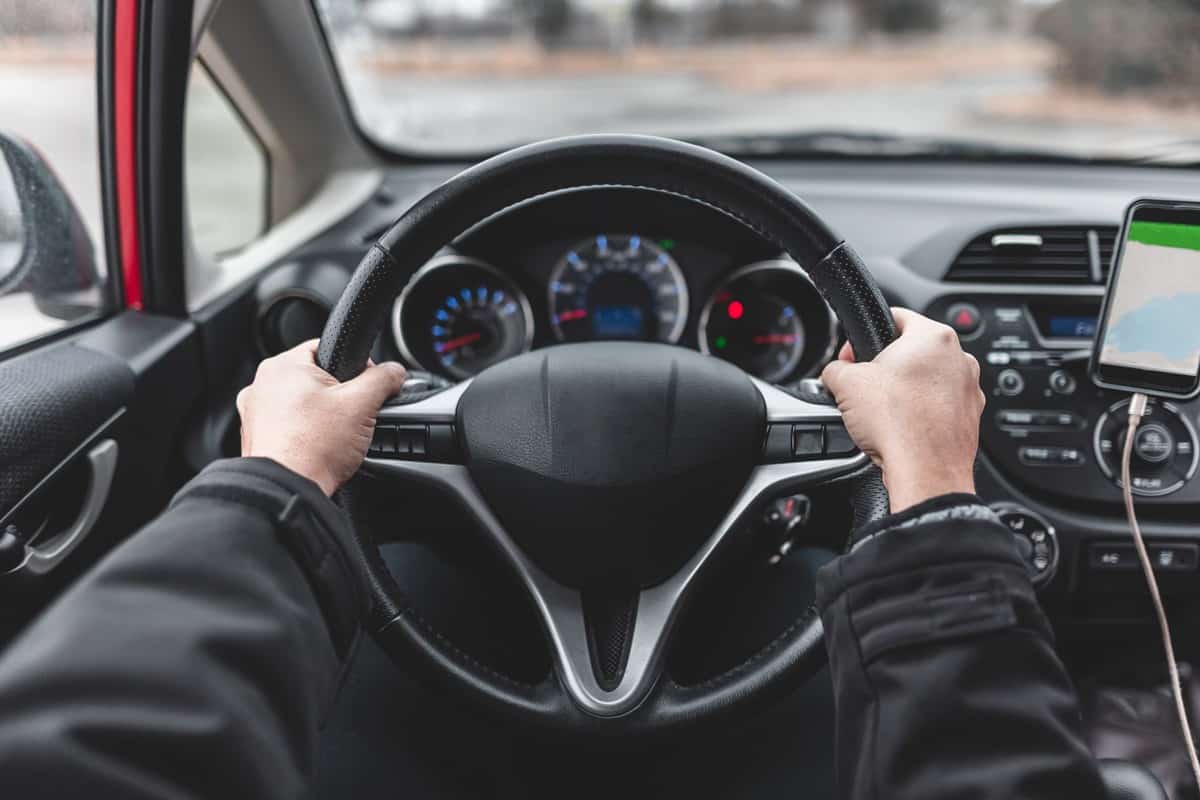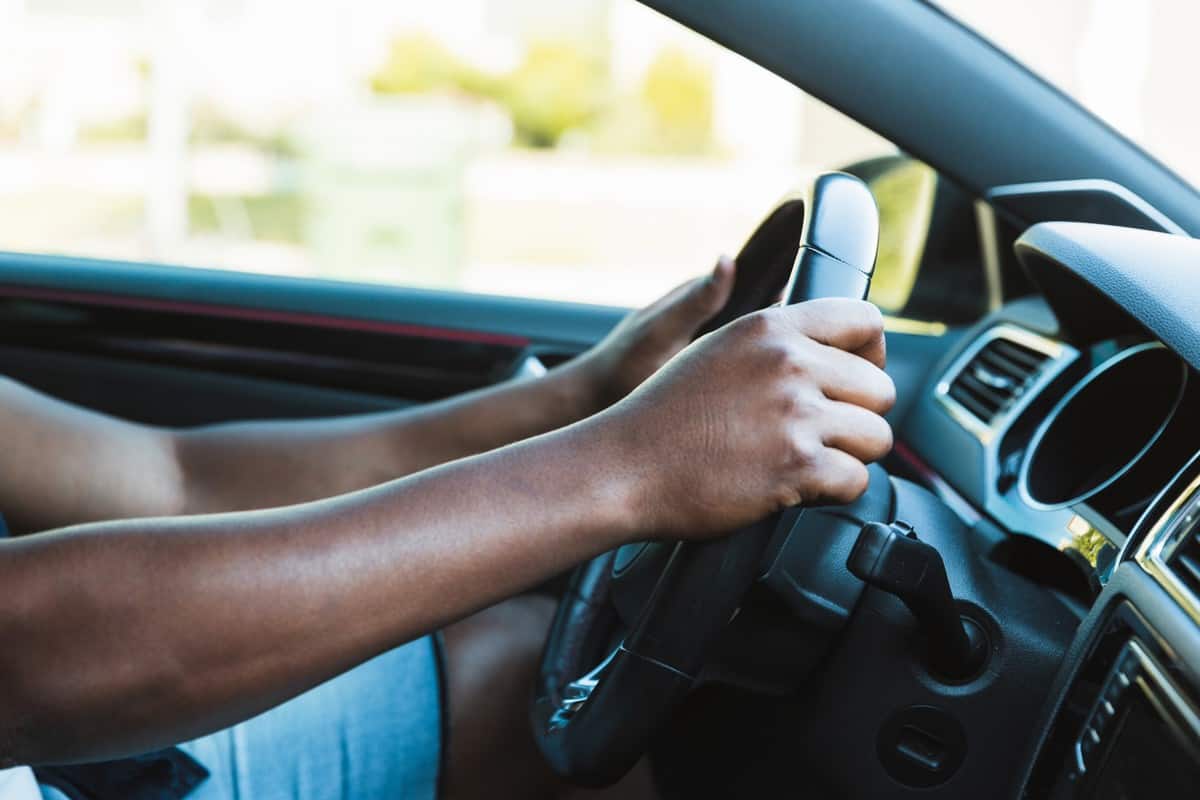A steering wheel typically goes back to center after a complete turn. However, if it does not return automatically, you can compromise steering stability and safety. Backed by our thorough research from car experts, this article will help you solve the problem.
If the steering wheel of your vehicle does not return to center, here are some reasons that could be causing the issue:
- Presence of binding parts like a ball joint, kingpin, or bell crank
- Friction in the steering, joint, and suspension systems
- Worn or loose tire rods
- Improperly adjusted or very tight steering gear
- Inner or outer front wheel misalignment (e.g., extreme negative camber, improper toe-in)
You'll have to check several components of your vehicle before the steering wheel works as expected. If you fail to fix the problem, your car won't be stable and safe to drive. Continue reading to learn about your steering wheel's returnability and how to fix any related problems.

Why Do The Front Wheels Automatically Return To Center?

Under normal conditions, the steering wheel should return to the center when you release it after a turn. The returning effect is feedback to the driver. Without it, you can't have a safe driving experience.
The steering wheel allows self-aligning torque and pneumatic trails to help the centering. When making a turn, a centripetal force brings the wheels back into a straight position.
The front wheels connect with a pivot point to the car. The rack and pinion system connects the vehicle's steering wheel and front wheels. The steering mechanism also connects to the front wheels by an inclination called a caster angle.
Defective and worn car components can compromise the steering wheel's returnability. You are risking an accident if the steering wheel inclination is faulty and does not return to the center.
Read on to learn why a steering wheel might not return to the center.
Why Is My Steering Wheel Not Returning To Center?

Steering wheel issues are technical and need mechanical solutions. Here are several reasons why your vehicle's steering wheel does not return to the center.
1. Binding components
There is a steering bind when the steering wheel does not return effortlessly to the center. The binding components can prevent the steering wheel from returning to the center after making a turn.
After some vehicle modifications, check the components such as the ball joint, kingpin, bell crank, and steering column. It is also possible to have binding due to worn-out bearings and other mechanical issues.
Other causes of binding include:
- Modification of steering knuckles that affect the geometrical alignments of the steering components
- Too lowered and bound tie rods deviate from the vehicle's designed steering, which distorts the suspension geometry
- Wrong front tension rod length
- Undersized tie rods can bend and bind
Solving the binding issues is easy because you only need to isolate the parts from the steering mechanism.
2. Friction of the gears and systems
The steering wheel can return easily to the center if nothing hinders its movement. The steering wheel will take some time to return to the center when there is friction. You might need considerable force to manually return the steering wheel to the center.
It will help if you check for excessive friction on the steering components, such as the linkages, joints, and knuckles. Disconnecting the pitman's arm can remove the frictional drag. If the issue persists, the cause is a defective steering gearbox.
3. Worn or torn tire rods
Tire rods keep the alignment of the front wheels and the steering wheel. These rods are part of the rack and pinion system that helps when turning the wheels.
It is inevitable that these rods will depreciate as the vehicle ages. The signs of damaged tire rods include clunking noises, uneven wear, the vehicle pulling to one side, or an inability to steer.
Although the issue of worn tire rods is not a major one, you accelerate the loss of the braking power of your vehicle. If you notice the signs, replace the worn tire rods immediately.
4. Tight and improperly adjusted steering gear
Over-tightening the steering gear causes the steering sector shaft to give too much pressure to the worm gear. Too much tightening happens when car mechanics remove excess play from the steering system.
In effect, it is difficult for the steering wheel to return to the center and steering in general.
5. Front-wheel misalignment
It is critical to keep the front wheels aligned. The changes in angles cause the wheels to point in different directions. You must adjust to the desired toe, camber, and caster angles for straight steering.
Concerning the issue of steering wheel returnability, the solution usually involves the caster angle. A positive caster angle is desirable to allow the steering wheel to return to the center. The desired caster angle for the front wheels is around 6-7 degrees.
The alignment happens on turning that involves the front wheels of the car. The angle allows self-aligning torque that keeps the front wheels pointing straight. As a result, you can have improved vehicle handling and cornering.
The toe and camber angles are also important for the steering wheel returnability. The camber affects cornering performance while the toe for steering sensitivity and safety.
6. Other reasons
Here are some other reasons that can cause the stiffness of the steering wheel to return to center:
- Leaking of the power steering fluid due to loose or cracked hose
- Pump failure in the steering system
- Worn out steering rack
- Forgetting to change or add the steering fluid
- A damaged or loose serpentine belt
You might not directly see the symptoms of the steering issue, so you will need regular vehicle check-ups. When the signs are apparent, you should not ignore them.
If you are not a car expert, ask a trusted mechanic for help.
How Do I Get My Steering Wheel To Return To Center?

After you learn the reasons, the next thing is to apply the solutions to return the steering wheel to the center.
Follow the procedure below:
- Determine the car components that are too tight, loose, or binding.
- You must disconnect the steering system parts, such as a pitman arm or bell crank.
- Check the binding on the steering column, linkages, and gearbox.
- Lift the front axle of the vehicle and move the wheels from left to right to check any binding. Disconnect those parts that cause the binding (e.g., tie rods).
- Replace the worn parts with new ones before proceeding to the next step.
- Once you have replaced the worn parts, the next thing is to realign the front wheels. Check the setting of the caster, camber, and toe angles.
- If you see the need to increase the caster angle for a straight axle vehicle, use a steel caster wedge. Install the wedge between the spring and axle.
- For vehicles with independent front ends, you can install a steering control.
The time and effort that you may spend on fixing the steering wheel can be exhausting. You will also spend money on the replacement of vital steering components.
The procedure may be too technical for you to handle. If you are unfamiliar with steering system components, you can ask a professional car mechanic to fix the issue. You might want to check if the mechanic is ASE-certified to get exceptional service.
Moreover, the issue can recur if you don't prevent the causes. You should have your car components checked regularly.
In Closing

It will unusual if your steering wheel does not return to the center after a turn. There are several causes of the difficulty in the steering wheel returnability.
The wear and tear of your vehicle contribute to the steering components' binding, loosening, or damage.
Check the conditions of steering gears, linkages, and suspensions to determine if these cause the problem. The front wheel alignment is also integral to allowing the normal return of the steering wheel to the center.
The remedy for the issue is to fix the steering mechanism or ask for a mechanic's help. Once done, you will need to do your part to prevent the issue in the future. Regular checks and correct driving practices can help avoid additional damage.
If you enjoyed this post, check out these related articles about a car's steering wheel:
Steering Wheel Hard To Turn Right But Not Left – What Could Be Wrong?
Steering Wheel Not Straight While Driving [Here's What To Do]
